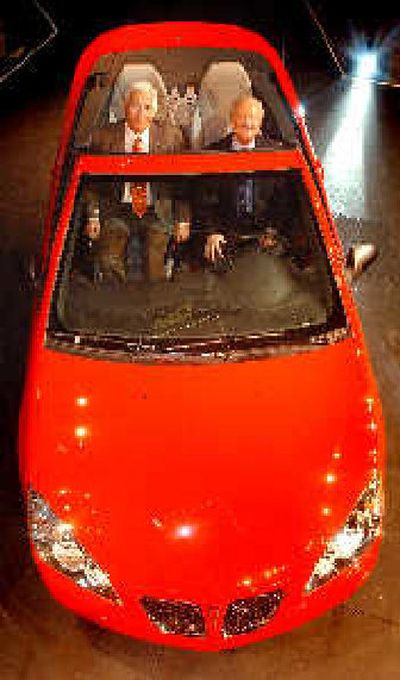Automakers harness fuel economy as marketing tool

As consumers brace for another round of gasoline-price increases after Hurricane Rita, car makers are rediscovering fuel economy as a marketing tool.
Last week, General Motors Corp. previewed a line of large SUVs due out next year and emphasized improvements in gas mileage as much as their vast interior space and sleek new designs. GM has also focused on fuel economy in its “Only GM” ad campaign, which since February has been running in newspapers, on network TV and other media. In the ads, GM touts the “20 that get 30,” meaning 20 of its models get at least 30 miles per gallon, including the Chevy Cobalt and the Pontiac G6.
“We wanted people to understand that we are the leader in this arena and we offer more fuel-efficient vehicles than any other car company,” says Bob Kraut, marketing director for GM.
Not to be outdone, Ford Motor Co. last week announced plans to boost production of gas-electric hybrid vehicles. Hybrids use less gasoline than standard engines and are expected to become more popular as a result of rising gas prices. Ford, which is hoping to erode Japanese auto makers’ dominance of the hybrid market, ran newspaper ads last month emphasizing its commitment to hybrid technology. It plans more such ads.
At DaimlerChrysler AG’s Chrysler Group, recent television ads have highlighted engines with what Chrysler calls its “multi-displacement system,” which deactivates cylinders in a V-8 engine when the car is cruising at highway speeds. Chrysler says the system can improve fuel economy by 20 percent. The MDS is standard in the Hemi V-8 engine on seven vehicles, including the Chrysler 300C and the Dodge Charger R/T.
As part of the campaign, Chrysler provided tips on how consumers could get the most fuel savings with an MDS engine, such as keeping speeds below 65 miles per hour. Chrysler’s MDS ads started running in print media and the Internet last year but three months ago the automaker ramped up the campaign with TV ads.
“We’ve definitely stepped up efforts to advertise our fuel economy technology,” says spokesman Nick Cappa of DaimlerChrysler. “You will see more on it in the future.”
Auto makers’ marketing shift was particularly noticeable right after Hurricane Katrina, which damaged oil-refining facilities in the Gulf of Mexico and sent gas prices skyrocketing. A study by TNS Media Intelligence found that in the two weeks following Katrina, GM, Toyota Motor Corp. and Hyundai Motor Co. broadcast 18 new commercials that highlighted fuel efficiency in their vehicles.
Rising gas prices are prompting more Americans to consider buying fuel-efficient vehicles. In a survey to be released Tuesday, market research firm GfK NOP found that 40 percent of Americans would immediately purchase a more fuel-efficient vehicle if the price of gas hits $3.50 a gallon, while 27 percent said the same if the price is at $3 a gallon. The survey is the result of interviews with 2,000 adults.
The shift away from big gas guzzlers presents a particular problem for GM and Ford, which have relied heavily on profits from large SUVs to cover narrow or nonexistent profits on many of their smaller car lines. For the first eight months of this year, sales of full-size SUVs are down 12 percent compared with the same period last year.